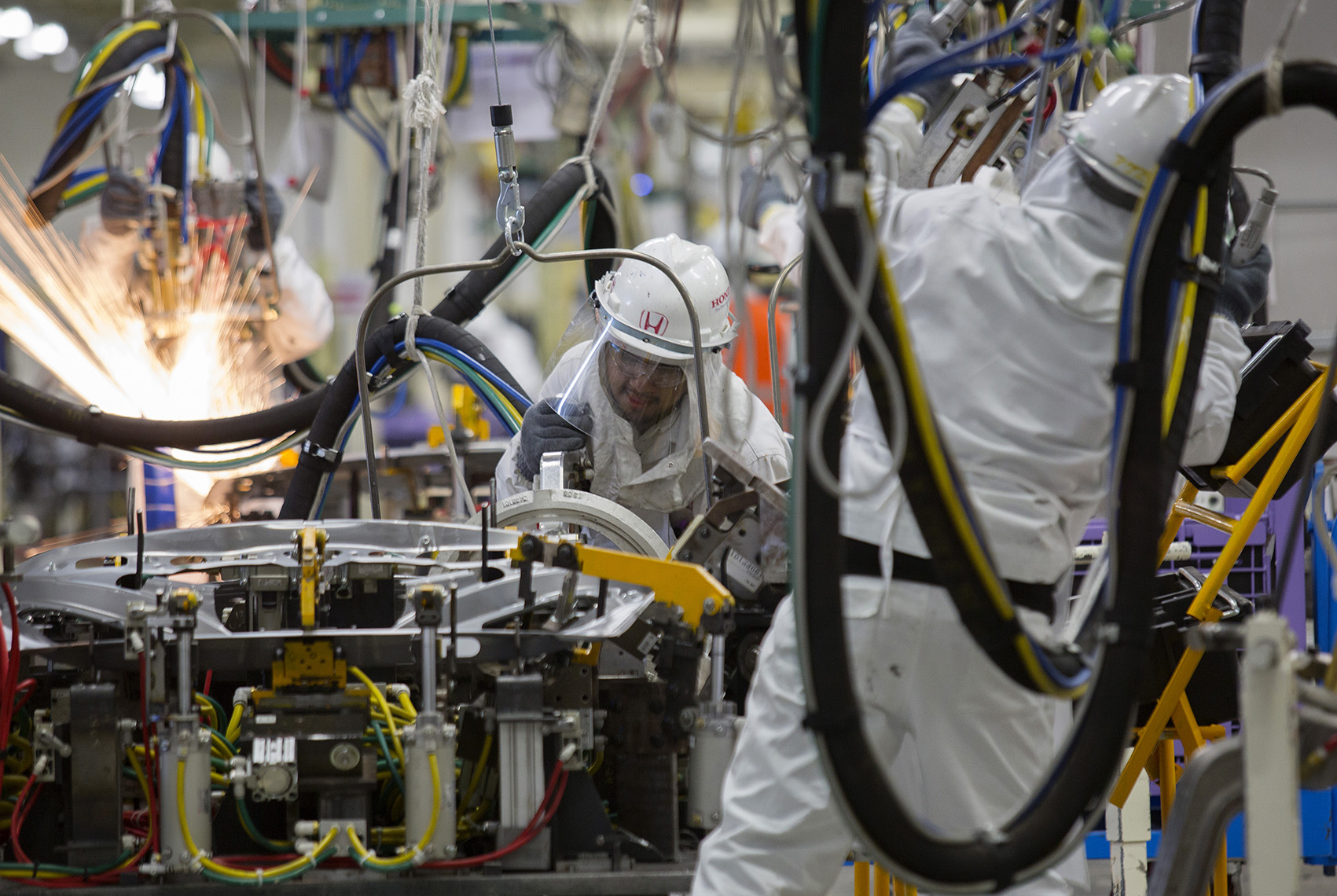Bahman Group has been assembling Mazda 3, known as Axela in Japan, since 2007, with all the major components and technology provided by Japan’s Mazda Motor Corp. under a complete knocked-down deal.
The cooperation dates back to 1959 when Bahman Group started assembling Mazda three-wheel pickups with a cargo capacity of 200 kg. The first Mazda vehicle Bahman Group produced is displayed in front of the entrance of the plant’s office, Japan Times reported.
Bahman Group, one of the private companies in Iran’s automotive industry, hopes to further expand cooperation with Japanese automakers.
“We are looking for new partners. Daihatsu and Toyota could be one of the candidates,” said Mohammad Zarabian, Bahman Group’s vice president for planning and development.
Iran’s auto industry is the second-biggest sector in the country following oil and the biggest in the Middle East.
Auto Status Quo
Auto production in Iran peaked at 1.64 million vehicles in fiscal 2011 but declined to 740,000 vehicles in fiscal 2013 partly due to economic sanctions imposed by the international community over Iran’s nuclear program, according to data compiled by the global automotive survey company FOURIN Inc. Production recovered to 1.13 million vehicles in fiscal 2014.
Iran’s auto market has been dominated by Iran Khodro Company and SAIPA, the largest and second largest state-owned automakers respectively, with a combined market share of 90%.
The Iranian government has a target of tripling auto production to 3 million vehicles by 2025. Under the plan, 2 million vehicles will be sold on the domestic market and the remaining 1 million will be exported to neighboring countries, including Iraq and Afghanistan.
With the economic sanctions now lifted following the historic nuclear deal signed between Iran and six major powers—Britain, China, France, Germany, Russia and the United States—in July last year, Iran looks forward to technology transfers and local production and export through joint ventures with foreign companies.
Nader Sakha, chief executive officer of Crouse, which operates a plant in the industrial zone that produces wiring harnesses for automobiles, said Iran has good infrastructure for auto production.
This includes the existence of many automotive parts makers, a well-educated workforce and better security compared with other countries in the region.
“We have enough potential here for others to come and start cooperation with Iranian companies,” Sakha said.
Yoichi Yamamoto, adviser in charge of the Middle East at the Japan External Trade Organization in Tokyo, said automotive demand in Iran is seen as promising due to its population.
Iran has about 80 million people, more than 40% of whom are 24 years old or younger.
“Iran is a country that has already been producing automobiles and is not an export market for completed cars,” said Yamamoto at the Middle East and Africa Division of JETRO’s Overseas Research Department. “In this sense, Iran would be a production foothold for the domestic market and its neighboring countries.”
The Japanese government lifted its sanctions on Iran in January and signed a bilateral investment pact in February to help Japanese companies do business, amid intensifying global competition for access to the Iranian market.
Cautious and Concerned
Despite high expectations from Iranian automotive and auto parts makers, Japanese automakers seem to be slow in responding, due partly to such factors as lingering uncertainty over domestic politics and US financial sanctions still being in place.
“Compared with others, for example French, Italian and German companies, Japanese companies are unfortunately behind these companies,” said Morteza Sobhani, vice president of auto parts maker Avrand Pishro.
European rivals of Japanese automakers, especially France’s PSA and Renault, are now actively doing business again in Iran.
Bahman Group’s Zarabian echoed this view.
“Unfortunately, the Japanese are losing the market day by day,” he said, adding that it would be very difficult for Japanese automakers to recover market share if they do not dive into the market now.
Zarabian said efficient small vehicles produced by Japanese automakers would be competitive in the Iranian market at reasonable prices, considering the serious air pollution, limited parking spaces in Tehran and demand from young customers.
As part of long-term efforts to help foster Iranian auto parts makers, JETRO is considering dispatching experts to provide technical guidance in the fields of production management and just-in-time systems.
If automakers find that they can procure high-quality parts in Iran in a timely manner, it would facilitate their advance into the market and increase the quality and price competitiveness of their vehicles.
“If Japanese automakers take the leadership in next-generation automobile technologies, we do not need to be too worried that they may be left behind,” JETRO’s Yamamoto said.
Japanese automakers are now placing emphasis on the development of next-generation automobile technologies, including electric cars and those with automated driving.
Iranian Foreign Ministry Spokesman Bahram Qasemi said Japan has “a good standing in Iran” in public opinion polls and from a cultural point of view.
“But there is no guarantee that Japan can maintain its position in Iran and this will be up to its own efforts,” he said.
Qasemi said Iran wants to cooperate more with Japan but noted that Iran cannot wait forever.
“If some countries are moving slowly, they cannot work with us. We can choose our partners,” he said. “If Japanese companies are not serious, they will be left behind in this competition.”


